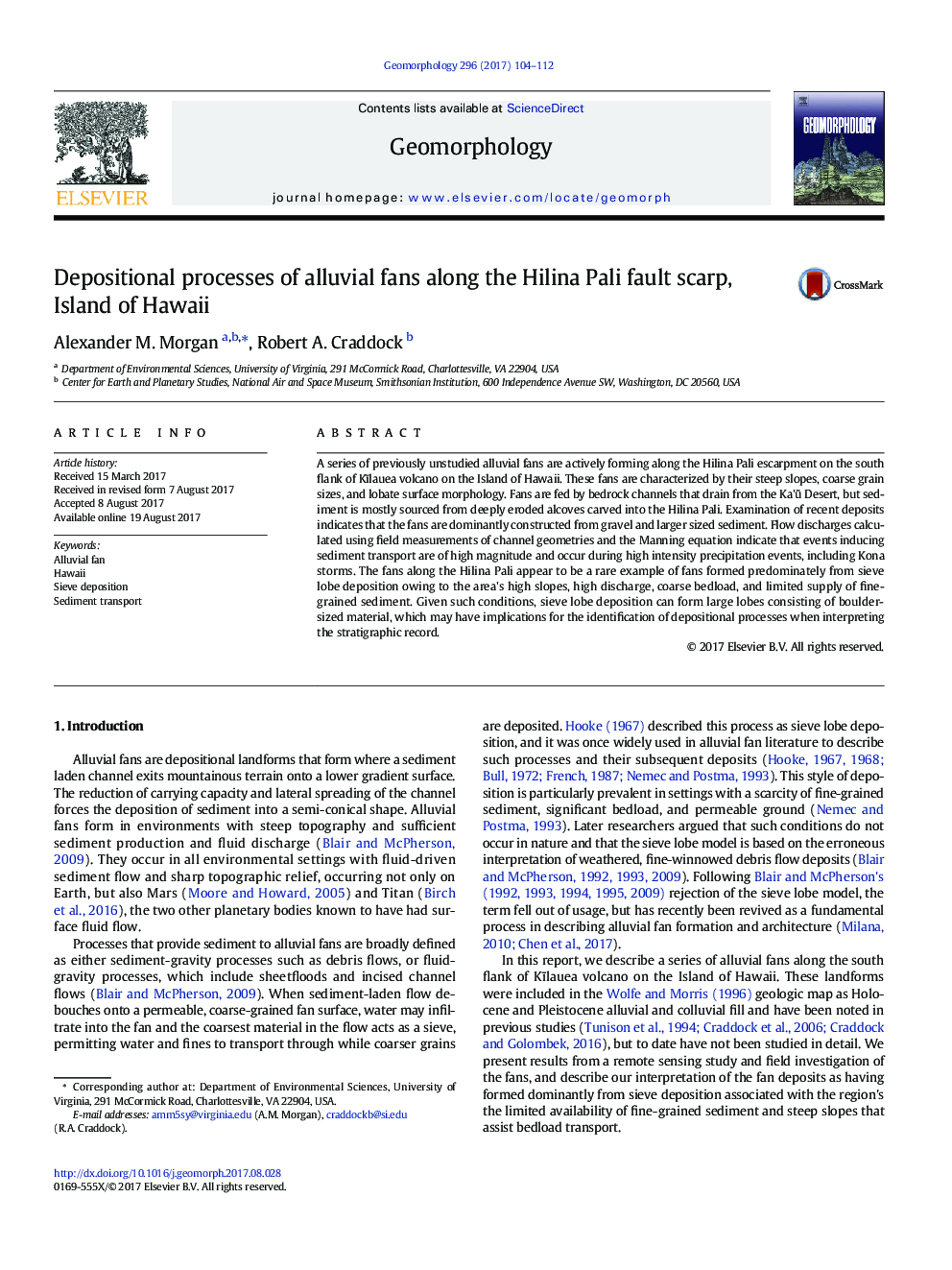| کد مقاله | کد نشریه | سال انتشار | مقاله انگلیسی | نسخه تمام متن |
|---|---|---|---|---|
| 5780811 | 1635354 | 2017 | 9 صفحه PDF | دانلود رایگان |
- We characterize flow processes of alluvial fans on the southern Island of Hawaii.
- These fans are actively forming almost exclusively from sieve deposition.
- Sieve deposition can produce large lobes consisting of boulders.
A series of previously unstudied alluvial fans are actively forming along the Hilina Pali escarpment on the south flank of KÄ«lauea volcano on the Island of Hawaii. These fans are characterized by their steep slopes, coarse grain sizes, and lobate surface morphology. Fans are fed by bedrock channels that drain from the Ka'Å« Desert, but sediment is mostly sourced from deeply eroded alcoves carved into the Hilina Pali. Examination of recent deposits indicates that the fans are dominantly constructed from gravel and larger sized sediment. Flow discharges calculated using field measurements of channel geometries and the Manning equation indicate that events inducing sediment transport are of high magnitude and occur during high intensity precipitation events, including Kona storms. The fans along the Hilina Pali appear to be a rare example of fans formed predominately from sieve lobe deposition owing to the area's high slopes, high discharge, coarse bedload, and limited supply of fine-grained sediment. Given such conditions, sieve lobe deposition can form large lobes consisting of boulder-sized material, which may have implications for the identification of depositional processes when interpreting the stratigraphic record.
Journal: Geomorphology - Volume 296, 1 November 2017, Pages 104-112
